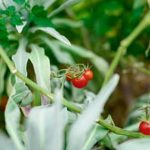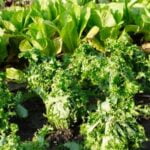As the temperatures begin to cool and the days become shorter, fall is the perfect time to start your fall vegetable gardening. In this article, we will provide you with essential tips on selecting the right vegetables, preparing your garden, creating a planting schedule, caring for your vegetables, harvesting and storage, dealing with cold weather, and ongoing maintenance.
Whether you are a seasoned gardener or new to vegetable gardening, these fall vegetable gardening tips will help you make the most of this season.
One of the main advantages of fall vegetable gardening is that cooler temperatures can actually enhance the flavor of many vegetables. Additionally, pests and diseases are often less prevalent in the fall, making it an ideal time to grow a wide variety of crops. With careful planning and proper care, you can enjoy a bountiful harvest well into the cooler months.
In this article, we will explore how to choose the best vegetables for fall planting and offer guidance on variety selection. We will also provide step-by-step instructions on preparing your garden for fall planting by addressing important tasks such as soil preparation, composting, and mulching.
Additionally, we’ll share a detailed planting schedule for fall vegetables along with recommended planting dates and tips for extending the growing season. So let’s get started on our journey into fall vegetable gardening.
Choosing the Right Vegetables
When it comes to fall vegetable gardening, choosing the right vegetables is crucial for a successful harvest. Not all vegetables thrive in cooler temperatures, so it’s important to select varieties that are well-suited for fall planting. Here is a comprehensive guide on selecting the best vegetables for your fall garden:
- Cool-Season Favorites: Some vegetables are well-known for their ability to thrive in cool weather. These include leafy greens such as spinach, kale, and lettuce, as well as root vegetables like carrots, radishes, and beets. Additionally, cool-season herbs like parsley and cilantro can also be great additions to your fall garden.
- Variety Selection: When choosing vegetables for your fall garden, it’s essential to consider the specific variety or cultivar. Look for varieties that have been bred for cold tolerance and quick maturity. For example, when selecting lettuce varieties, opt for options labeled as “cold-hardy” or “winter lettuces.”
- Succession Planting: To maximize your harvest throughout the fall season, consider succession planting. This involves planting small amounts of crops at regular intervals to ensure a continuous supply of fresh produce. For example, you can sow a new row of spinach seeds every two weeks to ensure a steady harvest.
By carefully selecting cool-season favorites and paying attention to variety selection and succession planting techniques, you can ensure a bountiful harvest from your fall vegetable garden.
Preparing Your Garden
Fall is the perfect time to start planting your vegetable garden as the cooler temperatures and increased rainfall create ideal conditions for many types of vegetables. When preparing your garden for fall planting, there are a few key steps to take to ensure a successful harvest.
The first step is to prepare the soil by removing any weeds and adding compost or organic matter to improve its fertility. This will provide your plants with the nutrients they need to thrive during the fall growing season.
Composting is also an essential part of preparing your garden for fall planting. By adding compost to your soil, you can improve its structure, moisture-holding capacity, and overall health. Additionally, mulching is another important practice that helps conserve soil moisture, regulate soil temperature, and prevent weed growth. These steps are crucial in creating a healthy environment for your fall vegetables to grow.
When considering what type of vegetables you want to plant in the fall, it’s important to choose those that are well-suited for cooler temperatures. Vegetables like broccoli, cabbage, carrots, kale, lettuce, radishes, and spinach are all great options for fall planting. It’s also important to select varieties that are known for their cold-hardiness and ability to withstand frost.
By following these tips for preparing your garden and choosing the right vegetables for fall planting, you can set yourself up for a successful fall vegetable garden. With proper preparation and care, you can enjoy a bountiful harvest of fresh produce well into the autumn months.
| Fall Vegetable Gardening Tip | Detail |
|---|---|
| Soil Preparation | Removing weeds and adding compost or organic matter |
| Composting | Improving soil structure and fertility by adding compost |
| Mulching | Conserving soil moisture and preventing weed growth |
Planting Schedule
When it comes to fall vegetable gardening, having a detailed planting schedule is essential for a successful harvest. By strategically planning your planting dates and using tips to extend the growing season, you can maximize your yield and enjoy an abundance of fresh, homegrown produce well into the fall and even winter months.
To make the most of your fall vegetable garden, here is a detailed planting schedule that includes recommended planting dates for various vegetables:
- Leafy greens such as lettuce, spinach, and kale should be planted in late summer or early fall, about 4-6 weeks before the first expected frost.
- Root vegetables like carrots, beets, and radishes can also be planted in late summer to early fall, ideally about 10-12 weeks before the first expected frost.
- Cool-season crops such as broccoli, cauliflower, and Brussels sprouts should be started from transplants in mid to late summer for fall harvesting.
- Herbs like cilantro, parsley, and chives can be sown directly in the garden in late summer or early fall.
Extending the growing season is also crucial for a successful fall vegetable garden. Here are some tips for doing so:
- Utilize row covers or cold frames to protect plants from early frosts and extend the harvest period.
- Consider using mulch to insulate the soil and regulate temperature, which can help keep plants growing longer into the fall.
- Plant cold-hardy varieties of vegetables to withstand chilly temperatures and continue producing throughout the season.
By following this detailed planting schedule and utilizing these tips for extending the growing season, you can ensure a bountiful crop of fresh vegetables from your fall garden.
Remember that this keyword “fall vegetable gardening tips” will provide you with valuable information on how to best plan out your planting schedule when preparing your garden for a successful autumn harvest.
Fall Vegetable Care
Watering
Proper watering is crucial for the success of your fall vegetable garden. As the temperatures start to drop, it’s important to adjust your watering schedule accordingly. With the cooler weather, plants generally require less water than during the hot summer months.
However, it’s crucial to keep an eye on soil moisture and provide consistent water to prevent stress on the plants. Consider investing in a drip irrigation system or soaker hoses to ensure efficient and targeted watering, especially for root vegetables.
Fertilizing
In addition to proper watering, fall vegetables also benefit from regular fertilization. Choose a balanced fertilizer with equal parts nitrogen, phosphorus, and potassium to promote healthy growth and development. Some gardeners prefer using organic fertilizers, such as compost or manure, which can be applied at planting time or as a top dressing throughout the growing season. Be mindful of over-fertilizing, as this can lead to excessive foliage growth at the expense of fruit production.
Pest Management
Pest control is another essential aspect of caring for fall vegetables. While cooler temperatures may help deter some pests, others may still pose a threat to your crop. Keep an eye out for common fall garden pests such as aphids, caterpillars, and beetles and consider implementing natural pest control methods such as hand-picking or using insecticidal soaps. Additionally, practicing crop rotation and maintaining good garden hygiene can help prevent pest infestations in your fall vegetable garden.
By following these essential fall vegetable gardening tips for caring for your fall vegetables including proper watering techniques, fertilizing practices, and pest management strategies you will be well on your way to a bountiful harvest of delicious and nutritious produce this fall season.
Harvesting and Storage
When it comes to fall vegetable gardening, knowing when to harvest your crops is crucial. Each vegetable has its own specific indicators for ripeness, so it’s important to do some research on each type of vegetable you’re growing. For example, winter squash should be harvested when the skin is hard and can’t be easily pierced with a fingernail, while root vegetables like carrots and beets should be harvested when they have reached the appropriate size and color.
Proper storage is also key to extending the shelf life of fall vegetables. Before storing, make sure to clean off any soil or residue and remove any damaged or bruised vegetables, as these can spoil quickly and cause others to rot.
Some vegetables can be stored in a cool, dark place such as a root cellar or basement, while others may need refrigeration. Understanding the specific storage needs of each type of vegetable is essential for keeping them fresh as long as possible.
In addition to proper harvesting and storage techniques, it’s important to note that some fall vegetables actually improve in flavor after being exposed to light frost. For example, kale and Brussels sprouts are known to become sweeter after a light frost. Understanding these nuances will help you make the most of your fall harvest.
| Vegetable | Harvesting Indicator |
|---|---|
| Winter Squash | Hard skin that can’t be pierced with a fingernail |
| Carrots/Beets | Appropriate size and color |
| Kale/Brussels Sprouts | Sweetness after light frost |
Dealing With Cold Weather
Understanding Cold Weather Protection
As the temperatures start to drop in the fall, it’s important to take steps to protect your fall vegetables from the cold. Understanding how different plants respond to cold weather and the various options available for protection can help you ensure a successful harvest.
One common method for protecting fall vegetables is using row covers. These lightweight, breathable fabrics can be draped over plants to provide a protective barrier against frost and cold winds. Another option is utilizing cold frames, which are like mini greenhouses that can be placed over garden beds to create a warm, sheltered environment for plants.
Choosing the Right Protective Measures
When selecting protective measures for your fall vegetable garden, it’s essential to consider the specific needs of your plants and the climate in your area. In addition to row covers and cold frames, other options include using mulch, cloches, or even building temporary hoop houses.
It’s important to assess the temperature tolerance of your fall vegetables and choose appropriate protection based on their individual needs. For example, some hardy cool-season crops may only require minimal cover during light frosts, while more sensitive plants may benefit from more substantial protection.
Tips for Effective Cold Weather Protection
To ensure that your protective measures are as effective as possible, it’s crucial to monitor weather forecasts and be prepared to implement safeguards when cold temperatures are expected. Additionally, proper installation of row covers, cold frames, or other protective structures is essential for maximizing their effectiveness.
In addition to physical protection, maintaining healthy soil and providing adequate nutrition can also help fortify plants against cold stress. By following these strategies for protecting fall vegetables from cold weather, you can increase the likelihood of a bountiful autumn harvest.
Fall Vegetable Garden Maintenance
In conclusion, fall vegetable gardening can be a rewarding and productive endeavor for any gardening enthusiast. By taking the time to choose the right vegetables for fall planting and carefully preparing your garden, you can set yourself up for a successful harvest. Following a planting schedule and providing proper care for your fall vegetables, including watering, fertilizing, and pest management, will help ensure healthy and thriving plants.
As the season progresses, it is essential to stay on top of fall vegetable garden maintenance to ensure a bountiful harvest. Regular weeding and mulching will help keep your garden beds tidy and weed-free, while also retaining moisture in the soil. Overall garden care, such as pruning, staking, and monitoring for pests or diseases, is crucial for maintaining a healthy environment for your fall vegetables to thrive.
In the end, with the right preparation and ongoing maintenance, you can enjoy an abundance of fresh, homegrown produce well into the fall season. By implementing these fall vegetable gardening tips, you can make the most of your garden space even as colder weather approaches. So get out there and enjoy the beauty of autumn while still reaping the rewards of your fruitful fall vegetable garden.
Frequently Asked Questions
When Should I Start My Fall Vegetable Garden?
Fall vegetable gardening typically starts in late summer, around mid-August to early September, depending on your location and climate. This allows enough time for the vegetables to mature before the first frost.
What Do I Do With My Vegetable Garden in the Fall?
In the fall, you can start by cleaning up your garden beds to remove any leftover debris from the summer. You can also plant cover crops like clover or rye to protect and enrich the soil during the winter months. It’s also a good time to harvest any remaining vegetables and preserve them for later use.
What Vegetables Should I Grow in the Fall?
Many vegetables thrive in cooler temperatures and are perfect for growing in the fall. Some popular choices include broccoli, Brussels sprouts, cabbage, carrots, cauliflower, kale, lettuce, spinach, and radishes. These vegetables can withstand frost and will continue to grow until the weather becomes too cold for them to survive.

If you’re looking to get into vegetable gardening, or are just looking for some tips on how to make your current garden better, then you’ve come to the right place! My name is Ethel and I have been gardening for years. In this blog, I’m going to share with you some of my best tips on how to create a successful vegetable garden.





